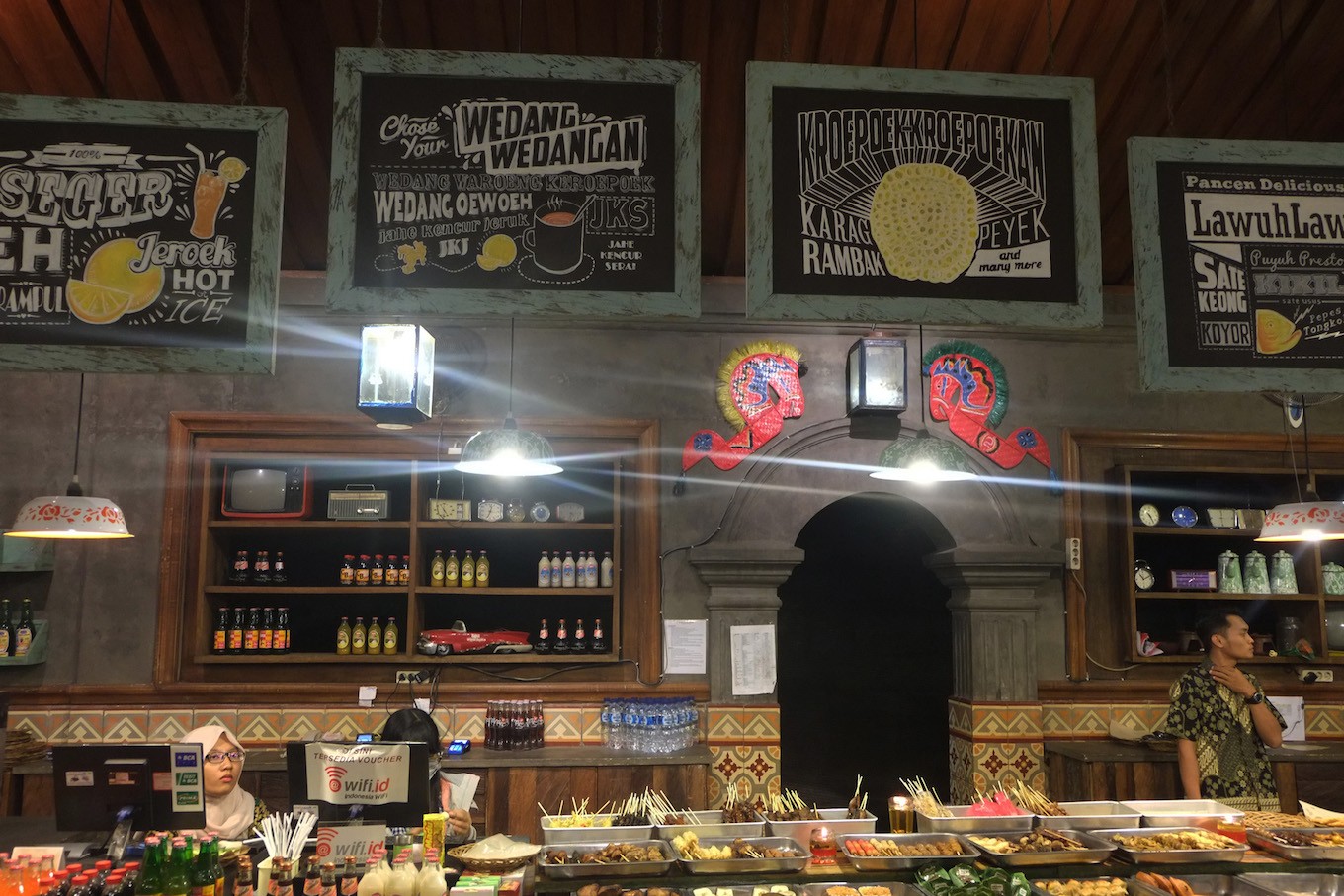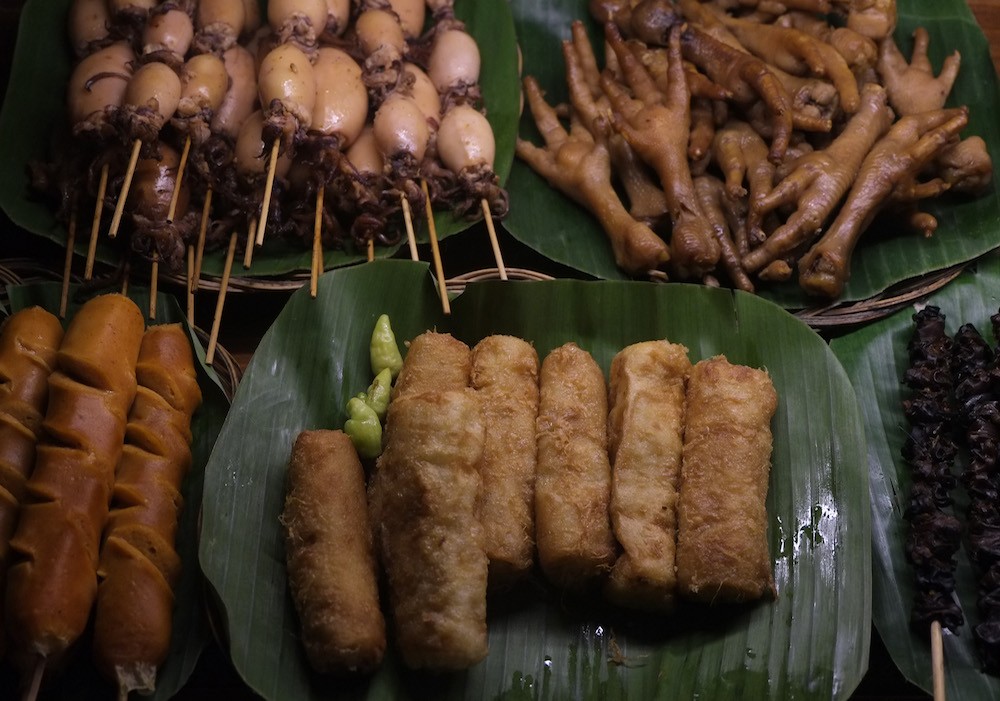Popular Reads
Top Results
Can't find what you're looking for?
View all search resultsPopular Reads
Top Results
Can't find what you're looking for?
View all search resultsWhy you should try these new-style 'wedangan' spots in Surakarta
Change text size
Gift Premium Articles
to Anyone
“Wedangan” or hanging out at a warung hik (local coffee stalls) while enjoying wedang (a drink), which may be tea, coffee or ginger tea and is usually accompanied by snacks such as roasted jadah (sticky rice), tempeh, tofu cooked with spices, nasi kucing (a small rice portion wrapped in banana leaves), has been an old but maintained tradition in Surakarta, Central Java.
In the past, warung hik was easily identified by its simple street-side presence with dimmed lighting, and were scattered around Surakarta, as well as Yogyakarta. In fact, people are more familiar with the Yogyakarta term for warung hik, “angkringan”.
 Waroeng Kroepoek, a new-style 'wedangan' joint in Surakarta, Central Java.(JP/Ganug Nugroho Adi)
Waroeng Kroepoek, a new-style 'wedangan' joint in Surakarta, Central Java.(JP/Ganug Nugroho Adi)
In the past five years, wedangan has reached a new demographic. No longer only serving the lower class, neo-wedangan places have updated their architectural looks, as well as locations to attract more upper-class visitors.
(Read also: ‘Wedangan’ in Solo modern and conventional styles)
One new style of wedangan is Cafe Tiga Tjeret (Three Kettles Cafe), which occupies a space on Jl. Ronggowarsito, not far from Pura Mangkunegaran. Cafe Tiga Tjeret has managed to steal the attention of upper-class Surakarta youngsters, reflected by the growing number of cars parked in front of the venue almost every night.
Offerring an array of wedang, from the traditional tea, ginger tea, coffee, wedang tape (fermented cassava tea), Cafe Tiga Tjeret also offers modern day juices. For those who like to enjoy their drinks with food, this wedangan place sticks to tradition and offers what any wedangan stall would: nasi kucing, roasted jadah, skewered intestines and quail eggs. Patrons are also able to watch live music performances while wedangan.
 A typical 'wedangan' food selection, available at most 'wedangan' stalls and cafes(JP/Ganug Nugroho Adi)
A typical 'wedangan' food selection, available at most 'wedangan' stalls and cafes(JP/Ganug Nugroho Adi)
Another new-style wedangan place is Wedangan Cangkir Blirik in the Banyuanyar area. This wedangan cafe occupies a traditional joglo house and features a vintage-ethnic concept, reflected by the use of antique chairs and round tables shaped into becak (pedicab). Expect your wedang to be served in a cangkir blirik or tin enamel cups with abstract motifs, which were very popular in the country during the 1970s.
Isnan Wihartanto, owner of Cangkir Blirik said, “I want visitors to experience a homey ambience, where they can enjoy their wedang, chat and feel at home.” Cangkir Blirik has approximately 200 visitors during weeknights, whereas on weekends the number goes up to 300. The place opens from 5pm to midnight, and offers traditional wedangan drinks and food at prices ranging from Rp 3,000 (22 US cents) up to Rp 10,000.
(Read also: Food stalls offering romantic Solo nights)
The selection of modern-day wedangan places in Solo also include Waroeng Keroepoek and Wedangan Pendopo.
“The most important part of wedangan is the talking, so we sell the ambiance [to facilitate it]. Food and beverages are complementary to the activity. What’s important is how to make our patrons spend more time here,” said Arries Yani Herwasto, owner of Waroeng Keroepopek on Jl. Dr. Radjiman.
For those wanting to be immersed in authentic Javanese culture, stop by Wedangan Pendopo in Turisari in the Mangkubumen area. The wedangan place offers a Javanese antique house adorned with paraphernalia from the past. Marvel at the vast antique elements collection, including old radios, antlers and a number of traditional Javanese musical instruments. Every night, traditional music plays softly, as patrons delve into the joint’s signature sego jangan ndeso (rice with fried tempeh and chilli). (asw)











